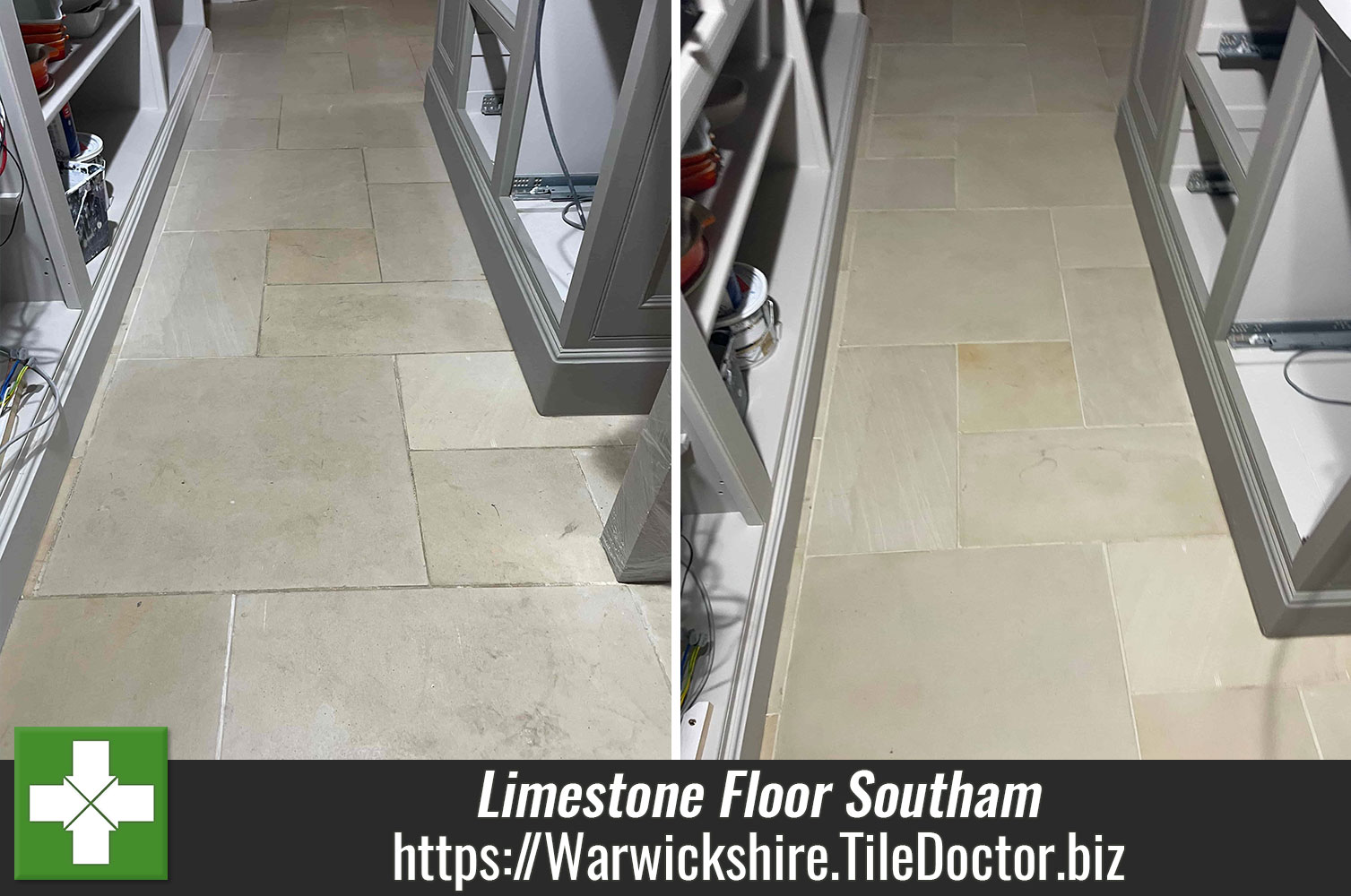Diamond Burnishing Blocks Used to Remove Acrylic Sealer from Grout in Southam Warwickshire
Details below of an impressive Limestone Floor installed at a large county house in the historic market town of Southam. I had been asked to deep clean the limestone floor tiles and grout lines in the kitchen and adjacent hallway. They had been previously cleaned by another company a few years ago and they now needed doing again.
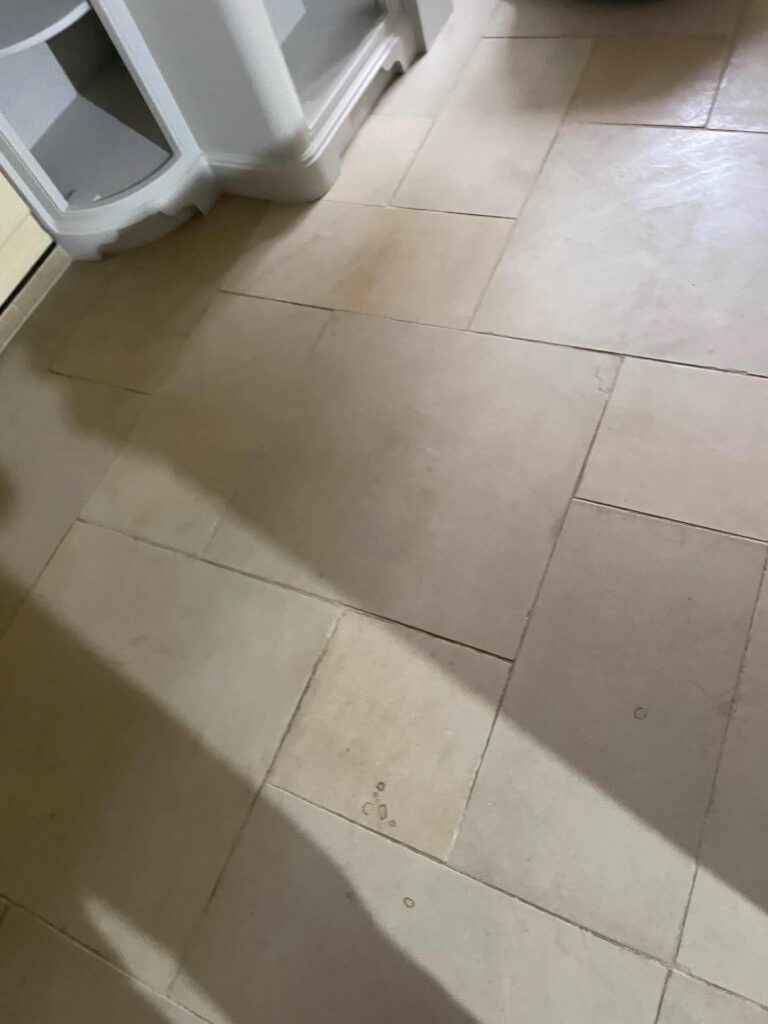
I went over to survey the tiles and provide a quote as requested. The stone was dirty but in good shape, I could see the previous sealer had started to fail in the busiest areas and this was now letting dirt become trapped in the pores of the stone. The main problem though was the grout which had a very rough surface and was heavy contaminated with acrylic sealer.
 |  |
Cleaning and Burnishing Limestone Tiles
Before beginning the work, I took the precaution of adding a clear silicone sealant between the kitchen units and tile. This is needed to prevent any water used during the cleaning process from soaking into the woodwork and damaging it.
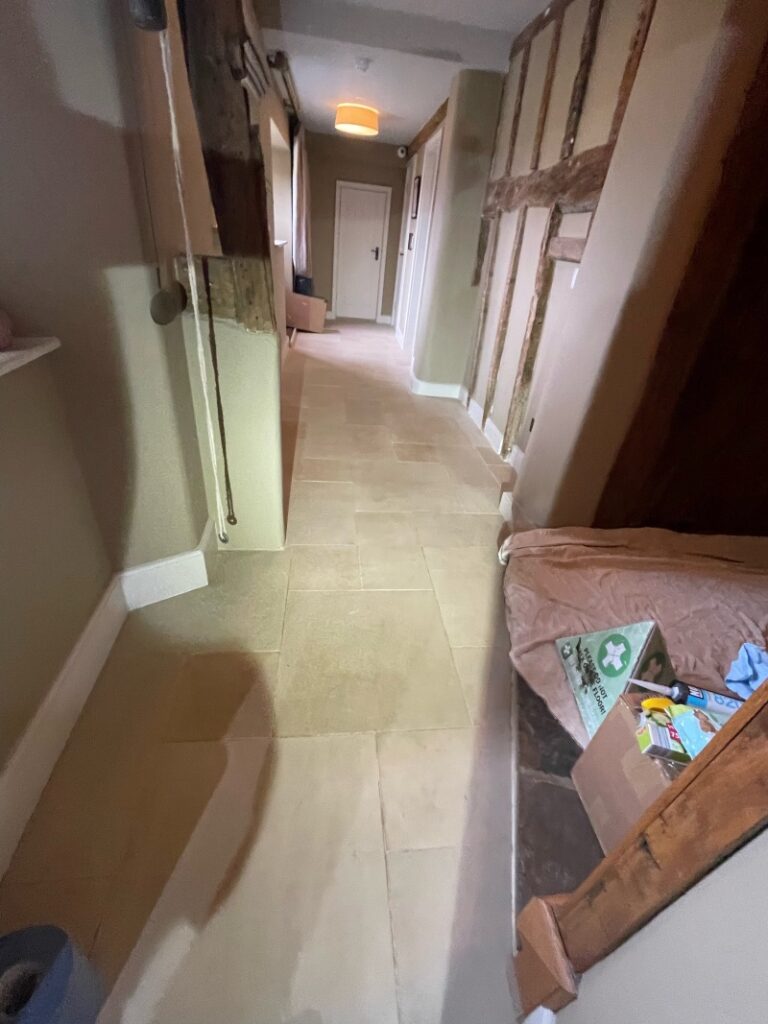
Once that was done work started on talking the grout which had to be rubbed back using handheld diamond blocks which was able to cut through and remove the acrylic sealer and dirt along with it. All the grout lines had been treated in this way and so realising it was going to be a tough job I had arranged for Steve Carpenter from Nottinghamshire Tile Doctor to lend me a hand for two days.
After resolving the grout issues, I moved on to restoring the appearance of the Limestone tiles themselves. This was done coarse diamond encrusted Burnishing Pads. Each pad has a different level of grit to grind away the dirt from the stone and build up the polished appearance. The process effectively resurfaces the stone leaving it looking new and fresh.
The process started with the application of a coarse 200-grit pad, fitted to a rotary machine, to grind away any excess muck and sealant lubricated with a little water and Stone Soap cleaning fluid. The resultant slurry was rinsed away and I followed up with the application of the 400-grit pad again with a small amount of water and Stone Soap.
Sealing Limestone Tiles
The last step was to seal the floor and after discussing this with the owner previously it was clear they wanted the Limestone to keep its light appearance and look as natural as possible. With that requirement in mind, we sealed the floor using a couple of coats of Tile Doctor Ultra Seal which is a premium impregnating sealer that is almost invisible and doesn’t alter the look of the stone. It works by soaking into the stone, occupying the pores, and thereby preventing dirt from becoming lodged there, this keeps the dirt on the surface where it can be easily cleaned away. Ultra-seal is also an excellent grout sealer.
 | 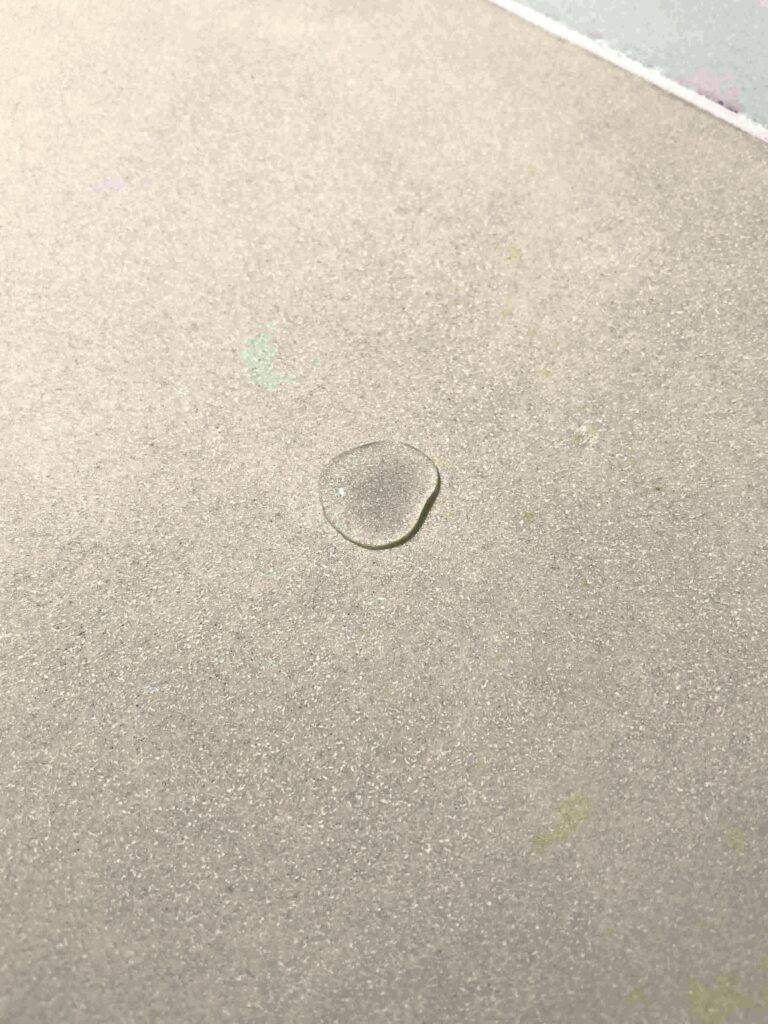 |
After three days of hard work by the team working the Limestone and Grout was looking so much better and was a massive improvement. The new sealer will also ensure the stone and the grout is much easier to maintain going forward.
 | 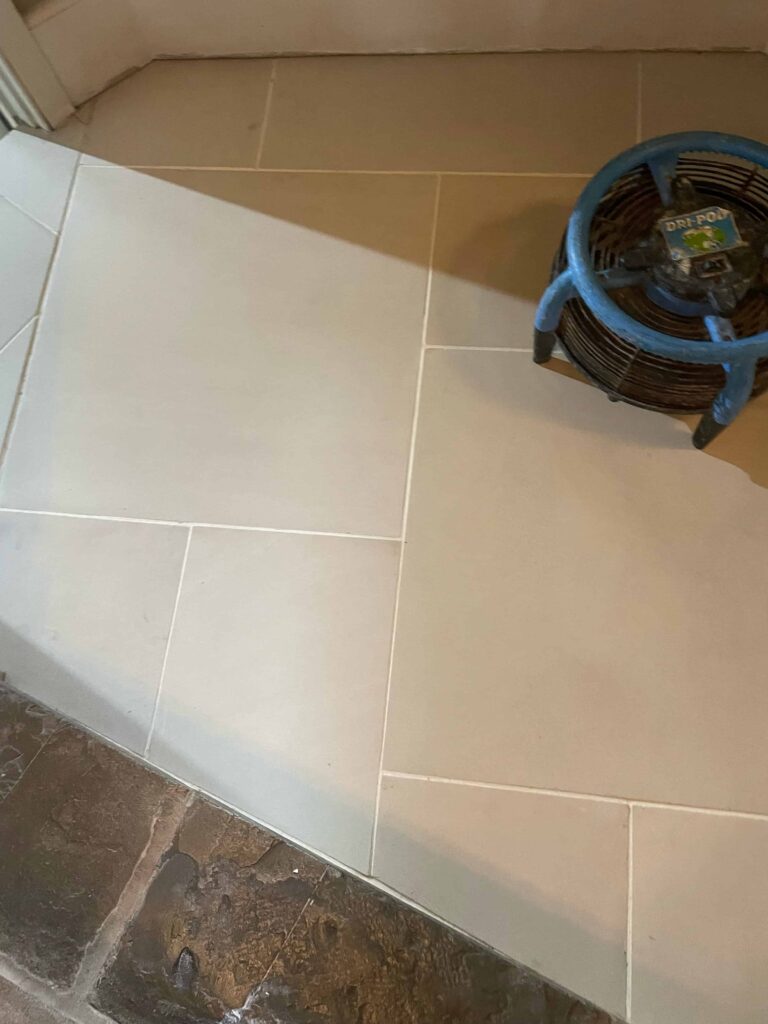 |
My customer was very happy with the floor and pleased it would be easier to clean from now on. Regarding cleaning, I recommended they use Tile Doctor Stone Soap which is a gentle yet effective tile cleaner that won’t impact the sealer.
Source: Limestone and Grout Cleaning Solutions and Services in Southam Warwickshire
